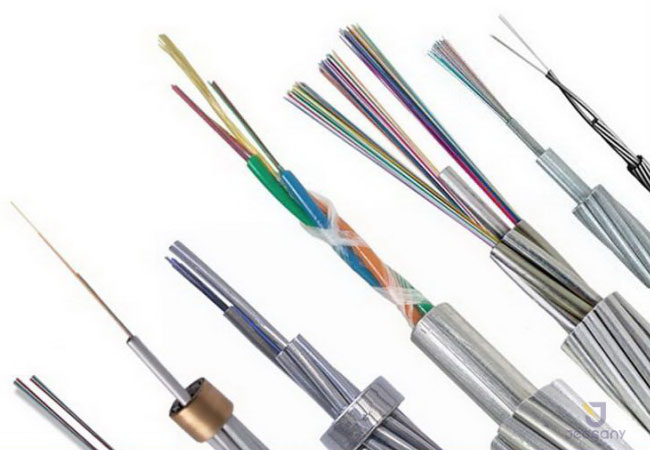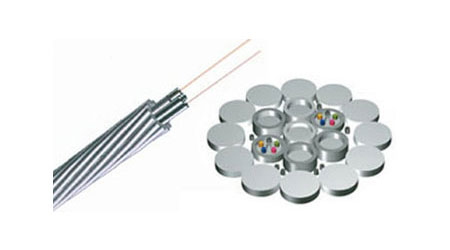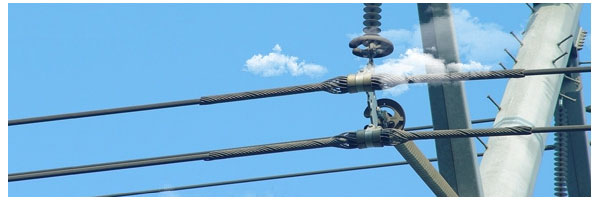Optical Fiber Composite Overhead Ground Wire
2022-11-07
2022-11-07
OPGW cable, Optical Fiber Composite Overhead Ground Wire (also known as fiber composite overhead ground wire). The optical fiber is placed in the ground wire of the overhead high-voltage transmission line to form the optical fiber communication network on the transmission line. This structure has the dual functions of ground wire and communication, and is generally called OPGW optical cable.


The installation design of OPGW should consider the coordination with wire stress, sag and insulation gap, and its load should not exceed the allowable use range of the existing tower and foundation. Therefore, the characteristic curve should be calculated according to the main technical parameters of the selected OPGW, and the junction box, various hardware and accessories layout drawings, outline drawings and installation drawings should be designed in combination with the actual engineering.
1. Treatment of initial elongation
For the treatment of the initial elongation of the OPGW, the cooling method can be used, that is, the aluminum-steel ratio of the OPGW is reviewed, and the initial elongation is treated with reference to the cooling value of the similar wire or ground wire.
2. Design of anti-vibration measures
Among the fittings used by OPGW, the tension clamp is of pre-twisted wire type, and the suspension wire clamp is equipped with pre-twisted wire and rubber gasket. These two types of fittings have certain anti-vibration capabilities. In order to further strengthen the anti-vibration capability, the installation of anti-vibration hammers can be considered, generally calculated according to the span:
When the span is less than or equal to 300M, install an anti-vibration hammer;
When the span>300M, install two anti-vibration hammers.
3. Problems that should be paid attention to in the construction and erection of OPGW
The construction and erection of OPGW is different from ordinary steel strands. Care should be taken to prevent permanent damage to avoid affecting the performance of the optical fiber in the future, and should focus on: OPGW torsion, micro-bending, local radial pressure outside the clip and pollution to the optical fiber . Therefore, in the construction stage, the following effective measures should be taken to solve it:
(1) Prevent OPGW from twisting
Install counterweight and anti-twist device on the board and the tightening clamp;
Adopt special double-groove pulley;
Tension line machine with double winch;
(2) Prevent and reduce the microbending and stress of OPGW
No acute angles are allowed (control the minimum bending radius of 500mm);
The diameter of OPGW cable reel should not be less than 1500mm;
The diameter of the pulley should be more than 25 times the diameter of the OPGW, generally not less than 500mm; the inner side of the pulley should have a nylon or rubber lining to prevent scratching the surface of the OPGW;
Appropriate pulling wire and pay-off fittings;
The maximum coil length of the specified OPGW is 6000M to prevent the number of times over the pulley;
The line rotation angle of the continuous pay-off is limited to ≤30°. In a tension section of the pay-off, the OPGW direction after the corner should be in a "C" shape;
(3) Control of pay-off tension:
Hydraulic tension pay-off and tractor with tension release device;
Limit pay-off speed ≤ 0.5 m/s;
(4) Prevent fiber pollution
In the construction and erection of OPGW, attention should be paid to encapsulating the ends;
In addition, before the OPGW arrives at the site, before the erection, after the completion of the erection and the optical fiber connection and the completion of the construction of the whole line, the acceptance test of the optical fiber attenuation of the OPGW should be carried out on the site in time.
OPGW optical cable is mainly used on 500KV, 220KV, 110KV voltage level lines, and is mostly used on new lines due to line power failure, safety and other factors.

(1) Lines with high voltage exceeding 110kv have a large span (generally more than 250M);
(2) It is easy to maintain, easy to solve the problem of line crossing, and its mechanical characteristics can meet the large crossing of the line;
(3) The outer layer of OPGW is metal armor, which has no effect on high-voltage electrical corrosion and degradation;
(4) OPGW must be powered off during construction, and the power outage loss is relatively large, so OPGW should be used in new high-voltage lines above 110kv;
(5) In the performance indicators of OPGW, the larger the short-circuit current, the more armored conductors are required, and the tensile strength is correspondingly reduced. However, under the condition of a certain tensile strength, to increase the short-circuit current capacity, only increase The metal cross-sectional area increases, resulting in an increase in the cable diameter and cable weight, which poses a safety issue to the strength of the line tower.




